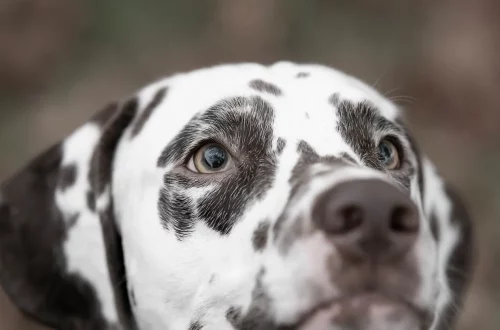
The Curious Case of Cats and Their Unlikely Relationship with Weed
The world of pets is often filled with surprising behaviors and peculiar preferences, and few creatures are as enigmatic as cats. These independent and often aloof animals have captured the hearts of millions with their quirky antics and mysterious ways. One of the more unexpected phenomena associated with our feline friends is their relationship with various plants, including cannabis. While many pet owners are aware of the dangers certain plants pose to their animals, the connection between cats and cannabis is a topic that has sparked curiosity and debate.
Cats are known for their unique sensory experiences, and their reactions to certain plants can vary drastically. Some cats exhibit playful behaviors when exposed to catnip, a member of the mint family, leading many to wonder if a similar attraction exists with cannabis. As society’s understanding of cannabis expands, so too does interest in its effects on animals, particularly in light of the ongoing discussions about the medicinal properties of the cannabis plant.
Understanding how cannabis interacts with cats requires delving into their biology, behavior, and the broader implications of cannabis use. While it’s easy to dismiss these interactions as mere oddities, they offer valuable insights into the complexities of animal behavior and the evolving perspective on cannabis in both veterinary and societal contexts.
The Biological Mechanism Behind Feline Reactions
To comprehend the relationship between cats and cannabis, one must first explore the biology of felines. Cats are equipped with a unique set of sensory receptors that allow them to experience the world differently than humans do. One of these receptors, known as the endocannabinoid system, plays a crucial role in how cats respond to various substances, including cannabinoids found in cannabis. This system is involved in regulating many physiological processes, such as mood, appetite, and pain sensation.
When cats encounter cannabis, the active compounds within the plant, particularly THC (tetrahydrocannabinol) and CBD (cannabidiol), can interact with their endocannabinoid receptors. While THC is known for its psychoactive effects in humans, its impact on cats can be quite different. Some cats may exhibit signs of euphoria, increased playfulness, or even mild sedation, while others might experience anxiety or discomfort. The variability in response can be attributed to individual differences in genetics, previous experiences, and even the specific strain of cannabis.
Moreover, it’s important to note that cats do not possess the same metabolic pathways as humans, which means that their processing of cannabinoids can lead to unintended consequences. For instance, while a small amount of THC might induce a playful or relaxed state in a human, it could potentially lead to toxicity in a cat. Symptoms of cannabis toxicity in felines can include lethargy, incoordination, and in severe cases, vomiting and tremors.
As a result, pet owners must exercise caution when considering the use of cannabis products around their cats. Understanding the underlying biology not only helps in making informed decisions but also highlights the need for further research in this area. The intricate relationship between cats and cannabis underscores the importance of recognizing the unique biological makeup of our pets and how it influences their interactions with various substances.
Behavioral Responses: Playfulness or Anxiety?
The behavioral responses of cats to cannabis are as varied as the cats themselves. Some may engage in playful antics reminiscent of their reactions to catnip, while others might display signs of anxiety or distress. This duality raises intriguing questions about the nature of feline behavior and the factors that influence their reactions to cannabis.
For many cats, exposure to certain scents and substances can trigger instinctual behaviors. Just as some cats may roll and play in catnip, a similar response can occur with cannabis. The intoxicating effects of THC may stimulate their natural playful instincts, resulting in bursts of energy and engaging play. This behavior can be entertaining for pet owners to observe, leading to a perception that cannabis is harmless or even beneficial for their pets.
On the other hand, not all cats will respond positively to cannabis. Some may become agitated, leading to increased anxiety and stress. This reaction can be particularly concerning for cats that are naturally skittish or prone to anxiety. The unpredictability of a cat’s response to cannabis highlights the necessity of taking a cautious approach.
Additionally, environmental factors play a significant role in how a cat perceives and reacts to cannabis. Factors such as the setting, the presence of other animals, and the cat’s individual temperament can all influence their response. For example, a cat in a familiar, calm environment may react differently than one in a chaotic or stressful setting.
Understanding these behavioral nuances not only helps pet owners manage their cats’ experiences but also emphasizes the need for personalized approaches to pet care. Each cat is unique, and their interactions with cannabis—whether positive or negative—can vary greatly. This complexity underscores the importance of considering a cat’s individual personality and history when discussing their relationship with cannabis.
The Legal and Ethical Considerations
As the discussion surrounding cannabis continues to evolve, so too do the legal and ethical considerations regarding its use, especially in relation to pets. With many regions around the world decriminalizing or legalizing cannabis for medicinal and recreational use, pet owners must navigate this changing landscape carefully.
From a legal standpoint, the regulations regarding cannabis vary significantly by location. In some areas, cannabis is fully legal, while in others, it remains strictly regulated or illegal. This patchwork of laws can create confusion for pet owners who may wish to explore cannabis products for their cats. It’s crucial for pet owners to familiarize themselves with local laws to avoid potential legal repercussions.
Ethically, the conversation becomes more complex. The potential benefits of cannabis, particularly CBD, have garnered attention for their anti-inflammatory and pain-relieving properties. Some pet owners may be tempted to administer cannabis-derived products to their cats in hopes of alleviating certain health issues. However, the lack of extensive research on the long-term effects of cannabis on feline health raises ethical questions about the appropriateness of such actions.
Veterinarians remain divided on the issue, with some advocating for caution and others exploring the potential therapeutic uses of cannabinoids. As a result, pet owners are encouraged to consult with a veterinarian before considering cannabis products for their cats. This ensures that any decisions made are informed by professional guidance, prioritizing the health and well-being of the pet.
In conclusion, the evolving legal and ethical landscape surrounding cannabis and its relationship with pets necessitates careful consideration. As more research emerges, a clearer understanding of the implications for feline health and behavior will hopefully guide pet owners in making responsible choices.
The Future of Cannabis Research in Relation to Pets
The future of cannabis research, particularly in relation to pets like cats, is poised for significant growth. As the conversation around cannabis becomes increasingly mainstream, the need for comprehensive studies examining its effects on animals is more pressing than ever.
Current research on cannabis primarily focuses on its use in humans, leaving a gap in knowledge regarding its impact on pets. However, as pet owners continue to express interest in the potential benefits of cannabinoids for their animals, researchers are beginning to address this void. Studies examining the effects of CBD and THC on various animal species, including cats, have started to emerge. These investigations aim to provide a clearer understanding of how cannabinoids interact with different biological systems and the potential therapeutic benefits they may offer.
Moreover, the increasing availability of cannabis-infused products for pets has sparked interest among veterinary professionals and researchers alike. The market for pet-specific cannabis products is growing, prompting the need for standardized testing and regulations to ensure safety and efficacy. As pet owners become more informed about the potential risks and benefits, they will seek guidance from veterinarians who can provide evidence-based recommendations.
The future of cannabis research in relation to pets holds promise not only for the understanding of feline behavior but also for the development of safe and effective treatments for various health conditions. As studies continue to unfold, pet owners can look forward to a more informed landscape that prioritizes the health and well-being of their beloved companions.
In conclusion, while the relationship between cats and cannabis may be curious and complex, it underscores the importance of understanding our pets and their unique interactions with the world around them. As research advances and societal attitudes shift, it will be essential for pet owners to remain informed and cautious, ensuring that their decisions prioritize their pets’ health and happiness.
**Disclaimer**: This article is not intended to provide medical advice. Always consult with a veterinarian or qualified healthcare provider for any health-related concerns regarding your pets.




